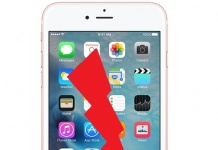![]() A release from Vook crossed my email yesterday. The email was highlighting the new iBooks for Mac and how it was now possible to view embedded video in a book on the desktop, directly from iBooks.
A release from Vook crossed my email yesterday. The email was highlighting the new iBooks for Mac and how it was now possible to view embedded video in a book on the desktop, directly from iBooks.
Honestly, I’m indifferent to the whole “reading eBooks on the computer” idea, and being able to view video doesn’t make me any more interested. I’m more the “curl up on the couch with my tablet” kind of person. Now I realize that I’m only (barely) in the majority. The latest figure I could dig up (from 2012) is that 42% read eBooks on their computer. My hunch is that percentage has dropped, but I can’t find anything to back that up.
So here’s my question. How many people actually want to watch video in a book? My guess is that I’m not alone in saying “Not interested.” I did several Google searches today on enhanced eBooks, video in eBooks and on Vook. You know what I saw? Almost nothing from this year. A couple of articles from 2012. A few more from 2011 and the majority were dated 2009 (when Vook established their company).
The fact that so little is being written about embedded video in eBooks tells me one of two things:
1. Few people are publishing them
2. Few people are reading them
Okay, honestly, I think it’s #2 driving #1.
Hence, why I’m indifferent to the announcement, and my suspicion is the majority of the eBook world is as well. Feel free to chime in and tell me I’m wrong.
So to make the story more interesting, this morning I woke up to an article on The Digital Reader about how iBooks for Mac is unstable. Go read it. The problems are embarrassing. People are having difficulty opening PDFs. The app crashes. It’s not handling images well. Some iBooks-specific features aren’t working well. Not to mention some disturbing concerns about how iBooks is handing accounts.
And though it let me log in, I couldn’t download any of my purchased books because I had already authorized five computers and this wasn’t one of them. So I went and deauthorized them all and then reauthorized this one only to be warned that if I downloaded books from this particular AppleID account, I wouldn’t be able to download items from a different AppleID account (e.g., my daughter’s, who owns the computer) for 90 days.
I should be able to access my purchases on any device to which I log in, whether or not someone else also has an account there. This means iBooks doesn’t really work in the cloud—it only works on your personal devices on the cloud, not at the library, or at the vacation house you rented, or on the computer you borrowed from your daughter.
Yep, some serious growing pains going on here. I didn’t see any mention of how embedded video is working (or isn’t), but nothing here is leaving me with a warm fuzzy feeling.
Anyone else loving/hating iBooks for Mac. Or video in your books?


































To be honest I don’t care what you think about your books and your readers.
Epub3 enables off-line reading with potential for on-line media.
I am sorry if you don’t have the imagination to understand how this could be useful.
There is more to books than Moby Dick!
I’ve only seen 3 enhanced ebooks and frankly, the video included belonged in a TV documentary. The exception used original thinking. It was a book on the US Civil War. There were typical maps using rectangles and squares superimposed on the geographical features of the battlefield. Those rectangles moved on the screen to represent the movement of battalions, divisions and corps through the course of the three days of the battle. Unfortunately, it stopped there and did not try to demonstrate Lee’s brilliant retreat.
To paraphrase the poet Basho, unless you can see with new eyes, there is nothing to write down. To make enhanced ebooks work will require real innovation not just imbedding video clips but I have no insights as to how to do it.
@Mike, I don’t think I lack imagination or fail to see the potential. However, right now, most of the enhanced books I’ve seen “enhance” their offerings by adding video. I don’t want video in most of my books. I read a book to “read.” If I want video, I’ll go somewhere else.
Now, LP’s example of dynamic maps in a Civil War book? I like that idea. I’d buy that kind of enhanced book. It’s more than just “slap a video in it.” Dynamic maps enhance the reading experience of a non-fiction book. It would also be an interesting addition to epic fantasy novels that have large-scale battles. Or adding dynamic ship schematics to my favorite ship-of-the line novels.
Sure, the potential is there. But right now few, if any, publishers are taking advantage of it. Nor are they educating the reading public to show they why they should care.
Oh, and I couldn’t finish Moby Dick…
But who says EPUB3 is only for books? What about documents?
And documents have particular purposes and in that context different media would add value.
Think of it this way – PDF was invented for documents and sued for books and EPUB3 was invented for books and will be used for documents.
@Mike, I don’t disagree with you, but there will be a learning curve for Epub3 being used for documents. Not saying it won’t or can’t happen, but right now, for most people epub=ebook. Someone’s going to need the vision to create documents in the format and then convince people to use them. The average business professional is conservative when it comes to technology. Educating them that an app like iBooks has business utility beyond reading business ebooks will be a challenge. If you know of someone who’s using epub that way, send me some links. I’ll write the story.
@Juli I am building a system in WordPress to create EPUB3 documents collaboratively.
One can preview relatively sophisticated documents within WordPress before exporting.
The content component is up and running for me and I will start producing some samples.
@Mike, keep me posted. I’d be interested in seeing those samples.
Hi all — Matt from Vook here. A little odd to see us thrown into this article on iBooks without any reference to the major initiatives from our company in digital book publishing for companies such as the New York Times, Fast Company, Guitar World, agents, authors, and many others. We’ve built a cloud based platform that enables authoring of reflowable and fixed layout ebooks, distribution to all the major marketplaces and POD, marketing services, and sales tracking. If you want to add video to your ebooks, we enable that — and we’ve produced some gorgeous video enhanced ebooks recently for Guitar World, Jeff Corwin of Animal Planet fame, and for McKinsey. Video works in some contexts, it doesn’t in others — but it’s simply one more element that book programmers need to consider today when constructing a narrative. The industry is moving fast. Our goal is to continue to build technology that lets creators do whatever they want with books. For example, we just released a product that makes it easy for an author to give away free ebooks directly to their readers, without going through the retail channels — and bestselling author Laurell K. Hamilton used it to drive 30,000 downloads in one day. Arguing over whether video does or doesn’t work seems besides the point — for a company like ours, the point is to provide the solutions our author customers ask for, which range from videos to links to user tracking to sales reporting, etc.
@Matthew, thanks for responding. I sent someone your way yesterday when I was interviewed about an upcoming project that includes embedded audio and video.
But I do think there is value to the video discussion. It’s often the first thing people think of with enhanced ebooks. Your company name does kind of nudge us in that direction. 😉
Obviously, from the discussion today, it’s not the only way to enhance a publication. But beyond the questions of “does anyone want it?” and “will anyone pay extra for it?” I’m not seeing a robust discussion around ways to effectively provide added value in books. There should be ways to do it in the education market, and we’re running a story later today about tablets in education. Is there innovation in this area that I’m missing? If so, point me in the right direction, and I’ll write about it. I’m not wedded to my own beliefs.
@juli If you’re interested in seeing video deployed in education, check out our partner Helios at http://helios.vook.com/ — they use our browser based product to sell to classrooms so that the students can all read along together in the class. I think this is where browser reading excels — in formal situations or organized learning environments. But I’m only saying that anecdotally, I have no data at hand behind that assertion.
In terms of enhancing publications, the data shows that’s already happening, just not always in the way we think. The App store is packed with apps — not even in books — that present information that once would have been the provenance of books in a new way, either through feeds or through more interactivity or messages or what have you. I think only looking at books means you’ll miss other ways people are choosing to deliver specific information that might suit the information more ideally than a book — or a magazine — would have at one point. Because enhancement is really about more ideally expressing a thought or observation. Our partner Thought Catalog is an excellent example of this — they run a thriving Website featuring short form written pieces, often about life as a 20-something, and they’ve carefully curated and released a selection of ebooks from authors that expand on their core offer. But the books and the Website and the Twitter feed and the articles — all of these are part of a new way of trying to express a certain thought or impression that sometimes is more clear and expressed more precisely when delivered in a variety of different ways. The message is the medium.
@Matthew, good examples. But don’t forget that the original point of the article (which we’ve gotten away from in fascinating ways) was that just the ability to view video in an ebook doesn’t automatically give one a compelling reason to get excited about a product that allows it. I’m not slamming Vook or any other company that wants to embed video or communicate ideas in different media. I guess I’m challenging content providers to come up with a more compelling “What’s in it for me?” message.
I’m currently reading Made to Stick by Dan and Chip Heath, which is all about making messages compelling. I’d guess the book is influencing how I’m looking at messages right now. Great book, by the way, if you haven’t read it.
We should not confine our thinking to fiction alone or even to just what is commercially available. There is so much more.
The palette available to digital authors is so much richer than what has been available in times past. Whether and when authors will become conversant with these new things on their palette is an open question. It will probably vary by genre and generational preferences. It will probably be driven by reader response to the ways that authors use them.
Mastering the things that are now available via ePub 3 and the *.ibooks format and then integrating this knowledge into one’s story telling, explaining, advocating, etc. may not be worth the effort for some authors. How many writers are willing and able to add cinematography to their skill set? Publishers adding media in post-production hasn’t worked well so far.
Speaking of the movie industry, this transition may be analogous to the development of “talkies” where audio joined moving pictures. This was disruptive to say the least. Some adapted and thrived while others perished. Perhaps we’ll one day think that an eBook without rich, interactive media is like a movie without sound.
@juli Yes — I get your point — what we’re saying is that we are enablers of authors — but it’s up to them to make the message compelling. Like Microsoft creates Microsoft word but doesn’t write the books, we provide the tools to create video enhanced books — it’s up to the authors to do something interesting. I think that’s the crucial differentiation. I certainly don’t think you’re slamming us — I just think it’s a subtle difference in what we do. We aren’t a publisher, producing video enhanced ebooks. We’re a technology platform that makes it possible for people to do that. The responsibility to make their message compelling is in the hands of the creator.
I’ll try to check out Made to Stick.
I agree with Matthew — it is up to the authors to do something interesting and, as another commenter cited, Helios shows that videos can add value. Short, relevant videos can bring ideas to life. Plus I like the customer-centric capacity of Vook to enable readers to buy on most any platform. As a former NBC reporter, now Forbes columnist, I’d love to create video-embedded eBooks to go with some of my columns — -seems like a Win-Win-Win for readers, Forbes and columnists
One year later iBooks is still not very good. Ugh. Now Apple forces us to use iBooks by moving books out of iTunes where they were fine. The new solution should actually be better than the old before forced migration. iBooks for Mac is not ready.